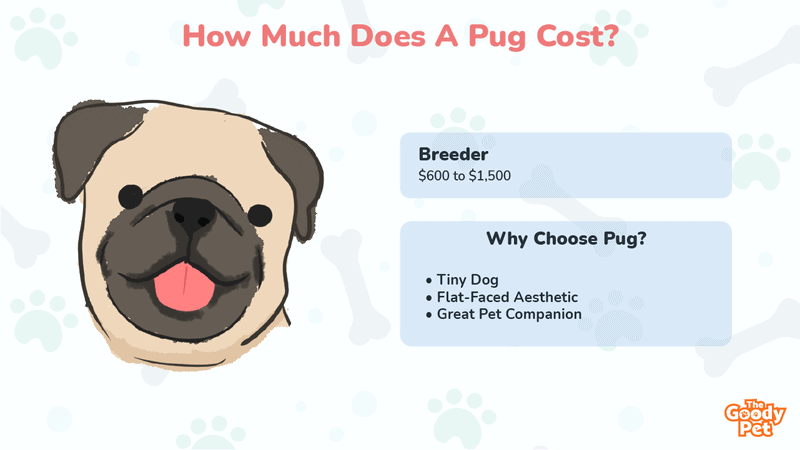Pugs cost between $600 and $1,500. This relatively high price is because many people find their unique facial features attractive. Pugs don’t require a lot of food or exercise, and they are generally healthy. One can expect monthly maintenance costs below $100. However, they may have expensive medical bills in their senior years due to health issues related to brachycephaly.
Is Owning A Pug Expensive?
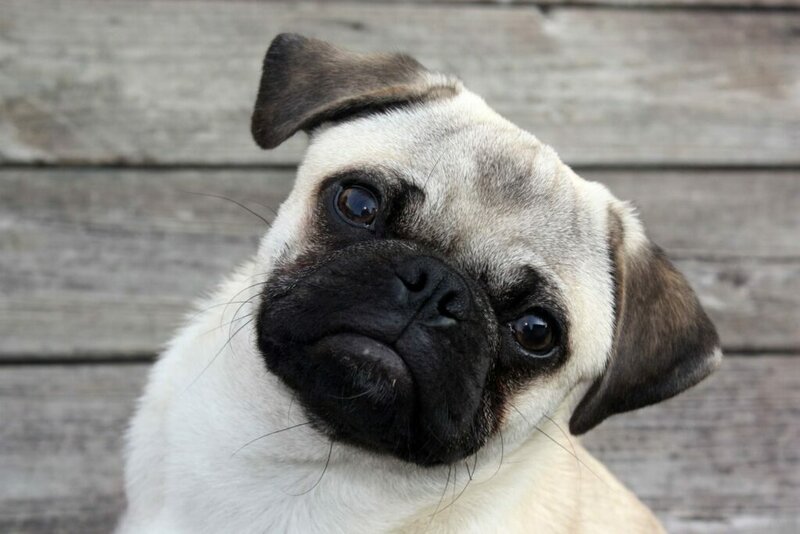
Pugs can be pretty expensive. Most breeders will charge between $600 and $1,500 for one, but some may ask for $1,900 to $6,000.
Despite their development and sale controversy, they are still quite popular. Here are a few more reasons why they are so expensive to buy and have.
Size
For the last couple of decades, accessory doggies have been the trend, and it does not seem to be letting up. Pugs, in particular, are famous for their small but stocky build. Their cute appearance makes them small enough to carry around but not so small that they are fragile.
However, for people really into tiny doggies, some breeders develop Teacup Pugs.
Flat-Faced Aesthetic
The first thing you will notice on a Pug is its weird, flat face. For many people, this is not flattering, but Pug enthusiasts find it heart-meltingly cute. This phenomenon has contributed significantly to the demand among dog owners who want a flat-faced aesthetic.
Personality
Pugs are generally good dogs to own as pets, mainly due to their personalities. These little doggies are pretty sweet and docile and fit perfectly in any home.
Numerous Health Issues
Maintenance for a Pug is about $100 to $200, mostly coming from vet bills. It is expensive to maintain a Pug, primarily due to its health issues caused by its flat facial features and small build. Dog owners are advised to avoid a Pug if they are not prepared for it financially.
Generally High-maintenance
Pugs are high-maintenance dogs with special grooming and dietary needs in general care. They may, therefore, not be the best dogs for first-time dog owners.
How Long Do Pugs Live For?
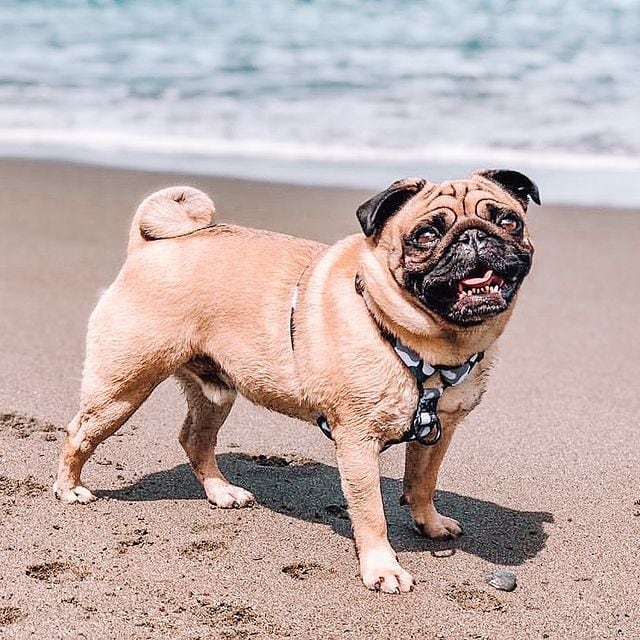
Despite all their health issues, Pugs have quite a long lifespan of about 12 to 15 years.
Unfortunately, their lives are plagued with suffering, almost always a result of inherited issues and complications from their facial features. So while Pugs do not easily die, they have a lot of health issues to live through. Here are some of the problems Pugs have that you should prepare for.
Brachycephalic Airway Obstructive Syndrome
Due to their flat snout design, the Pug has a very short airway. This deformation dramatically affects a Pug’s ability to breathe both at rest and during intense activities. It could lead to severe respiratory distress with loss of consciousness or even death in severe cases.
Skin Fold Dermatitis
You may notice that your Pug smells terrible, in which case skin fold dermatitis is the most common culprit. Moisture from bodily secretions or improper wiping after washing could attract bacteria or fungi, resulting in skin irritation. It is therefore absolutely crucial to keep these folds as dry as possible.
Eye Trauma
Due to their flat faces, the eyes of a Pug are very exposed. Trauma from accidents or attacks by other animals could lead to severe injuries, including complete eye prolapse.
Heat Intolerance
Pugs are notoriously terrible when it comes to heat tolerance. As with most of their issues, this can be traced back to their facial features, which limit panting for heat loss. They need a lot of help during hot weather, including offering excellent hydration and shading.
Necrotizing Meningoencephalitis
Necrotizing meningoencephalitis is a rare condition that affects Pugs more than most dog breeds. The condition leads to inflammation and eventual destruction of brain tissue. Unfortunately, there is no cure.
Pregnancy Complications
Pugs have pregnancies lasting about 63 days and can have up to 6 puppies in a litter. Pregnancy complications like obstruction can be life-threatening to both the puppies and their mother. These incidents usually happen during mixed breeding with larger dogs.
How To Take Care Of Pugs?
Frankly speaking, it can be pretty hard to raise a Pug.
While they are more significant than most other small dog breeds, they are still quite frail and sickly and need a lot of tender loving care. If you consider getting one of your own, a few tips should come in handy to help you give your little pup a safe and comfortable home.
Get Them On A Healthy Diet
A healthy diet is essential for keeping your Pug happy and healthy. We recommend that you consider getting the Pet Plate to give them the best quality food possible. With human-grade ingredients, natural preparation and packaging, and customizable menus, your Pug will eat the best food.
It would be best to consider feeding your Pug dog-friendly fruits like strawberries for extra vitamins and fiber.
Include Dietary Supplements Into The Diet
In addition to all the healthy food, include multivitamin supplements in the Pug’s diet to boost access to essential micronutrients and healthy compounds. Whether it is a general wellness multivitamin blend or a bone and joint supplement, it will make a difference in the Pug’s life.

Schedule Regular Vet Visits
Pugs are prone to health problems, some of which are highlighted above. However, there are also a few rare problems that you should be aware of. If you take care of your pup and schedule regular veterinary checkups, you can improve the dog’s quality of life.
Can Pugs Be Left Alone? Temperament Of Pugs
Pugs are fantastic pets and make great companions. They love spending time with their human friends, whether taking a nap or playing fetch. But they can be a bit challenging to train, and it can cost up to $150 to $200 to get them trained.
Social
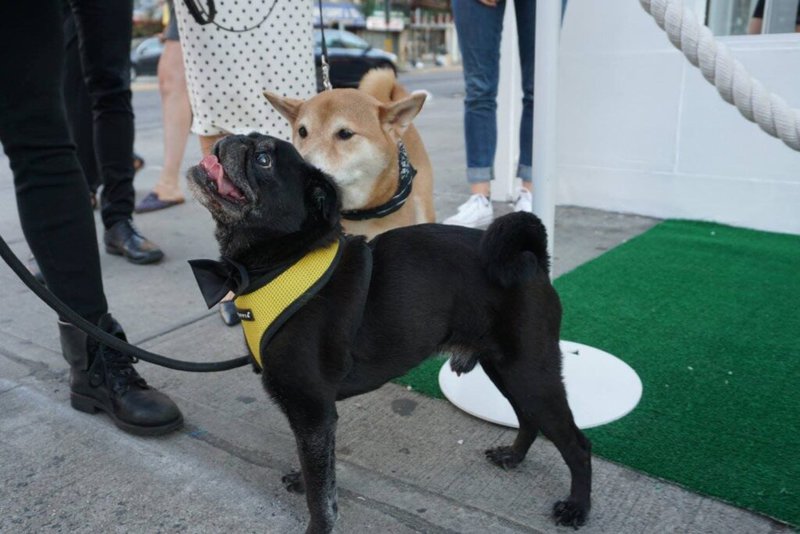
Pugs are very social dogs. They get along with anyone, from their companions to strangers and even other pets. They are also quite friendly and rarely jealous of other dogs, especially if socialization starts early.
Stubborn
Pugs may not be the smartest of dogs, but they are relatively clever. However, their stubbornness makes it so challenging to train them, whether it is potty training or teaching them cool tricks. If you are having trouble with yours, try Brain Training for Dogs for more tips on how to get them to comply and learn faster.
Calm
Pugs are the furthest thing from aggression and are perfect for dog lovers who want a laid-back and docile dog breed.
Affectionate
Pugs love to cuddle and be held, making them fantastic lap dogs. Their affectionate nature is often extended to anyone they don’t feel threatened around, including strangers.
Playful
Pugs are also quite playful. It is not uncommon for them to launch fake attacks, including jumping on their owners and playing biting you as a way to get your attention for playtime.
How Often Should Pugs Be Bathed? Grooming Tips For A Pug
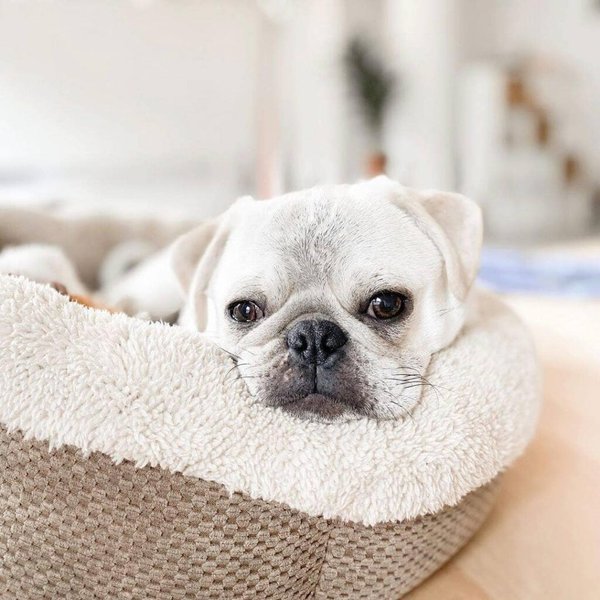
Pugs have very short coats, and it may seem to many that this makes them low maintenance in terms of grooming.
This couldn’t be further from the truth as Pugs tend to shed a lot throughout the year.
In addition to the shedding, you have a lot to take care of, from dental hygiene to washing. These extra grooming requirements could cost you $440 to $1,700 a year, depending on whether you do it yourself or with professionals. Whatever the case, here are a few tips on grooming your Pug.
Brush Regularly
Pugs have short fur that may not tangle but still sheds quite a bit. You can get away with brushing their coats 2 to 3 times every week to get rid of any loose hair that would have ended up on your surfaces. Just make sure to use a brush with rounded edges to avoid irritating their often sensitive skin.
Clean Between Folds
Pugs are usually washed once every month or two. However, it would be best if you did not wait so long to clean between their skin folds. Instead, use a doggy wet wipe or a clean cloth to eliminate any grime or dirt that may accumulate there between scheduled washes.
Dental Hygiene
If you don’t take care of your Pug’s teeth, their breath can become stinky. They might also get gum and tooth diseases. To prevent this, buy your dog toys that help clean their teeth and dental water additives that kill germs and get rid of bad breath.
Related Questions
At What Age Is A Pug Full Grown? At around nine months of age, most Pugs stop growing. By the time they are a year old, they are considered fully mature adults. Due to their build and appetite, it is possible to see an increase in size and weight. However, this fluctuates with time and activity levels and is not technically considered development.
Why Are Pugs So Popular? Pugs are famous mainly for their unique aesthetic, resulting from their flat faces. Unfortunately, while this look is incredibly endearing, it comes at a significant cost to the dog’s comfort and health. Pugs are also popular due to their sweet personalities, which makes them ideal family pets.
Is It Cruel To Buy A Pug? Yes, it is, in some instances, not a good thing to buy a purebred Pug. It creates demand for breeders who continue to produce more of the suffering pooches. However, if you find one at a shelter that needs a good and loving home, it would be okay to take them home.

